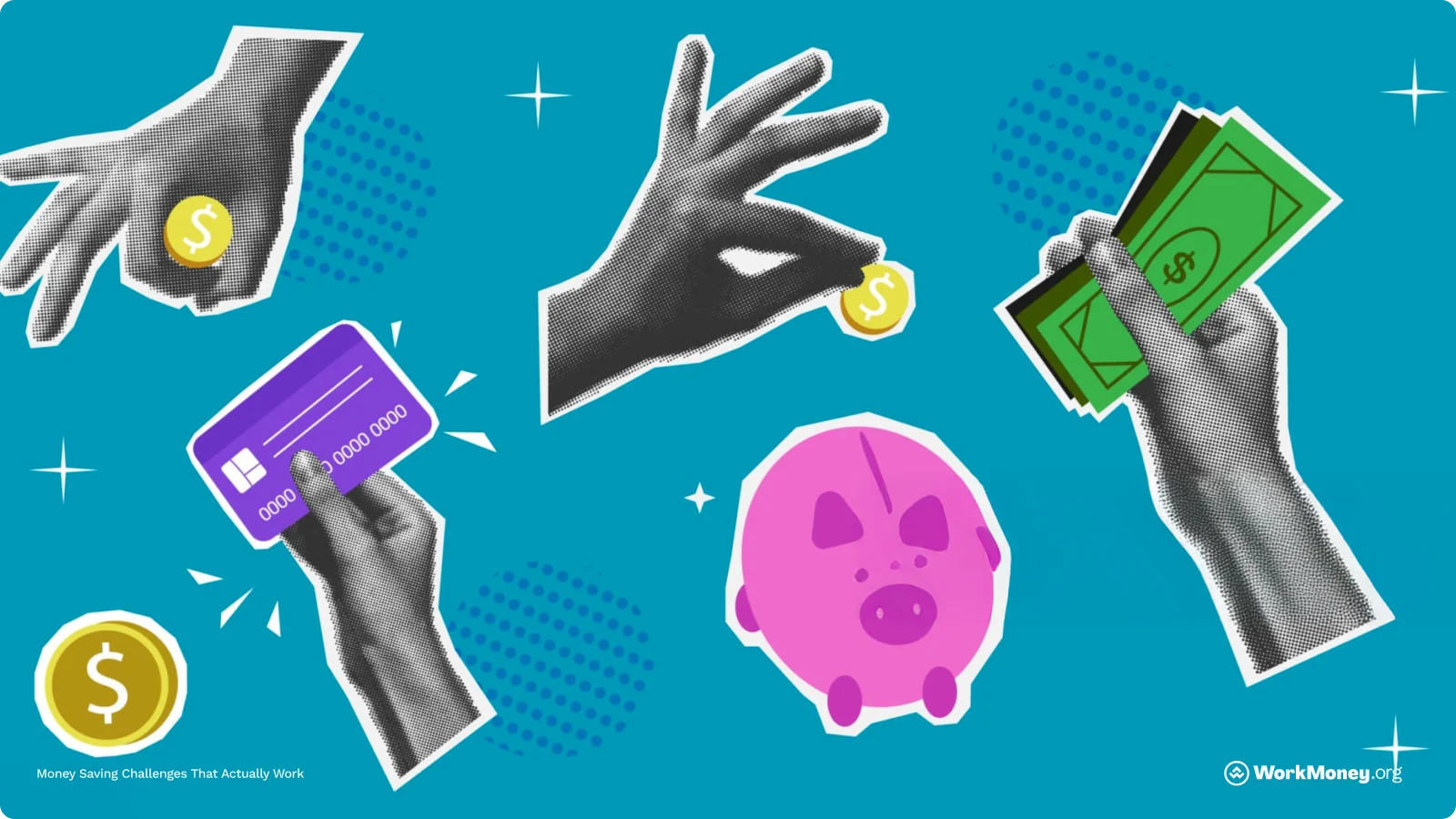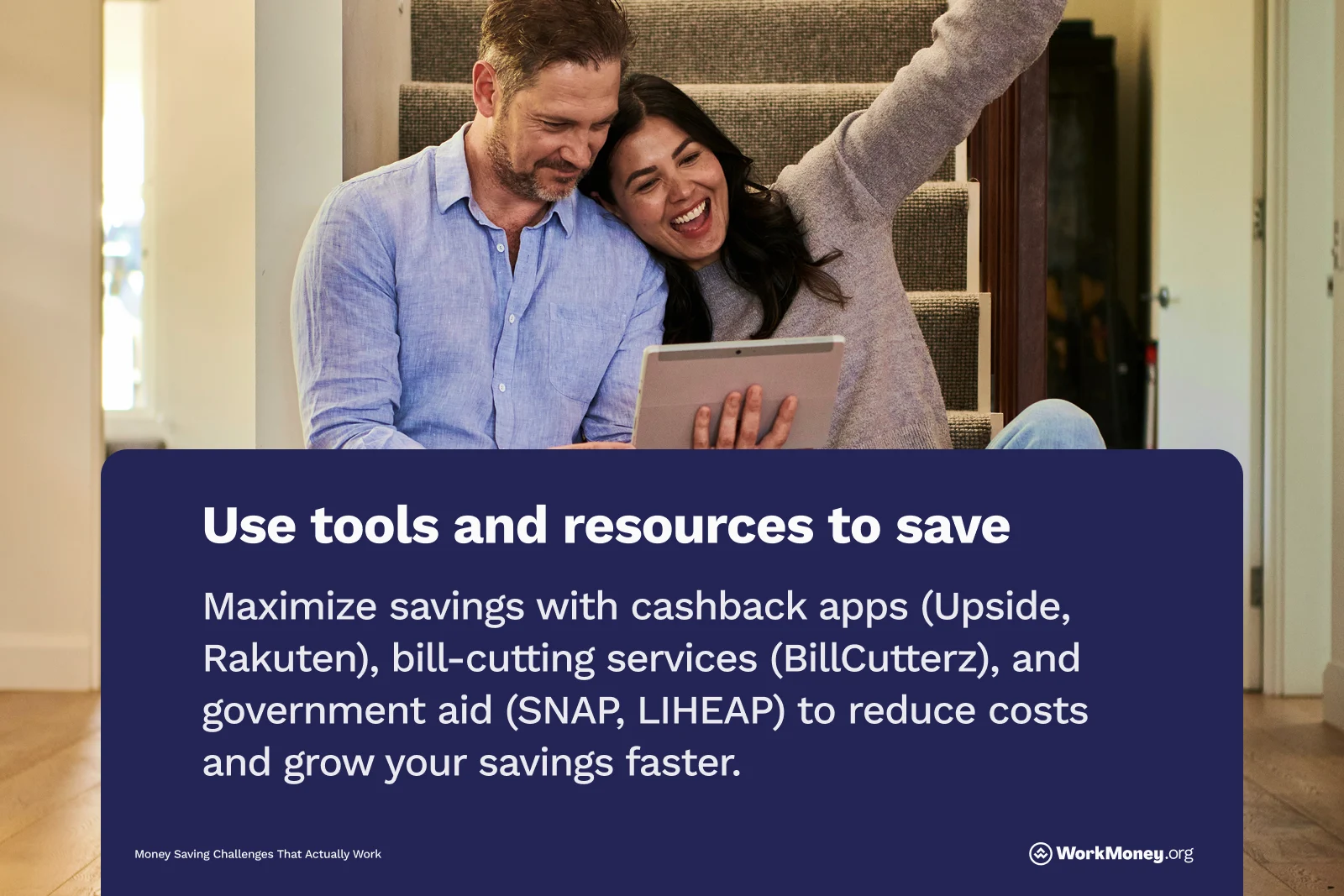Money-Saving Challenges That Actually Work
Turn saving into a game with proven money challenges that make budgeting easier, fun, and consistent—no matter your income level.

Saving money can feel like a chore, especially when you’re juggling everyday expenses and rising costs. But what if you turned saving into a game? For people who enjoy competition, money-saving challenges can offer the structure, accountability, and fun you need to make real financial progress. At WorkMoney, we’re concentrated on helping you save as much of your income as possible.
In this guide, we’ll break down the psychology behind gamified saving, explore easy challenges for all income levels, and offer tips, tools, and resources to help you build momentum—no matter where you're starting from.
Why Gamifying Saving Actually Works
There’s no doubt that saving can be hard, but when you reframe it as a “fun” challenge, suddenly it’s more engaging. That’s why many banking and fintech apps are leaning into gamified experiences to help users stay motivated and engaged.
Take Ally, for instance. The app allows users to divide their savings into "buckets" with personalized goals and add-on boosters like recurring transfers, round-ups, or surprise savings deposits. These features mimic the structure of a game, rewarding progress and encouraging consistency.
This type of behavioral nudging, which rewards positive financial habits, is proving effective. According to Forbes, it's helping users make smarter money decisions.
A recent study by Bayes Business School supports this idea, showing that gamifying financial tasks with tools like badges, leaderboards, and progress bars can provide the psychological motivation needed to boost savings.
With that, here are some of the best money-saving challenges to try.
Money-Saving Challenges
Challenge 1: The “Tiny Dollar” Challenge
What it is: Save $1 a day (or $7 per week) for a month. It’s simple, flexible, and easy to track.
How to stay on track: Use a printable calendar or savings tracker to check off each day. You can also stash your daily dollar in a physical jar, an envelope, or a separate savings account.
Pro Tip: If you’re eligible and experiencing financial hardship, utilizing benefits like SNAP (Supplemental Nutrition Assistance Program) and LIHEAP (Low Income Home Energy Assistance Program) to reduce grocery and utility expenses can help you get back on your feet and build up your savings.
Challenge 2: The “Every Penny Counts” Envelope Game
What it is: Start by saving $2 a week and increase your savings by $1 each week for 10 weeks. (Week 1 = $2, Week 2 = $3, etc.)
Why it works: The gradual increase builds momentum without feeling overwhelming. You’ll save $65 in just over two months, and you probably won’t miss it.
Challenge 3: The “1% Pay Raise”
What it is: Every time you receive a raise, save 1% of your income automatically.
Why it works: You’re saving from “new” money you weren’t used to spending anyway. You can also apply this to freelance gigs or side hustles.
Example: If you earn $3,000/month and save 1%, that’s $30/month—$360/year. Increase to 2% after 3 months and you’ve doubled that savings rate painlessly.
Pro tip: Set up an automatic transfer the day your paycheck hits your account.
Challenge 4: The Biweekly Auto-Transfer
What it is: Set a recurring auto-transfer to your savings account every payday.
Why it works: It syncs with your pay cycle, so saving becomes a built-in habit.
For your gas and dining bills, consider using cashback apps like Upside to save even more money.
Challenge 5: The “No-Spend” Challenge
What it is: Choose a set period (a week, a month—you decide) where you spend nothing on non-essentials like dining out, coffee, or shopping.
Why it works: By cutting out extras temporarily, you free up money to save and bring awareness to spending habits you might not even notice.
Example: No new clothes for a month. At the end of the month, look at how much you spent on clothes the month prior and transfer that amount to savings. This is a great challenge for big shoppers.

How to Make Saving Challenges Work for You
Saving challenges can be powerful tools, but only if they fit your life. Here’s how to make sure your challenge actually works and doesn’t become just another goal you forget after a week.
1. Align with Your Pay Schedule
Saving works best when it’s predictable. If you’re paid:
Weekly: Try smaller, consistent contributions (Ex: $5 every Friday)
Biweekly or Monthly: Set auto-transfers that hit the same day your paycheck lands, so it’s "out of sight, out of mind" before you're tempted to spend it
Pro tip: Use banking apps that let you set up recurring transfers or round-ups on purchases to automate your savings.
2. Pick the Right Type of Challenge for Your Budget
Not every challenge fits every lifestyle:
On a tight budget? Try the Tiny Dollar Challenge or Envelope Game—these focus on small, manageable amounts
Have a bit more flexibility? Try percentage-based strategies like the 1% Pay Raise or Biweekly Boost Challenge.
Matching the challenge to your current financial situation helps build momentum without overwhelming you.
3. Track Your Progress
As we mentioned earlier, psychology shows that humans are deeply motivated by progress. To stay on track, try one (or both) of these simple methods:
Track Your Streak: Mark off each day or week you complete the challenge. Watching your streak grow builds consistency and motivation.
Track Your Total: Keep a running total of how much you’ve saved. Seeing your balance grow reinforces your efforts and encourages follow-through.
Use whatever works for you—an app, a printable tracker, your phone’s notes, or a spreadsheet. The key is seeing your progress to stay motivated.
4. Utilize Your Resources
If you're experiencing financial hardship, you’re not alone—and you’re not out of options. Government assistance programs can help lower your everyday expenses, freeing up cash to put toward savings goals:
SNAP: Helps cover grocery costs, so you can reallocate food budget dollars to savings.
LIHEAP: Lowers energy bills, allowing you to save what you would’ve spent on utilities.
These programs aren’t just safety nets, but they can help you get back on your feet and build financial momentum.
There are also tons of free tools and rewards apps that help you save without changing your spending habits:
EveryoneOn: Helps you find affordable internet plans that fit your budget.
Upside: Earn cashback on gas and dining—perfect for boosting your savings envelope or auto-transfer.
Access Perks: Many employers or memberships offer automatic retail discounts—pocket the difference.
Rakuten: Get cash back from thousands of retailers just by clicking through the app or browser extension.
Pro Tip: Put the money you saved or earned with these programs towards your savings as an extra boost.
5. Make It Fun and Rewarding
We’ve said it once and we’ll keep on saying it, the key is to make it fun. Give yourself mini-rewards for hitting milestones—like a $5 treat when you reach $100 saved. Or challenge a friend and compete to see who can stay on track the longest. Community and accountability go a long way in keeping momentum.
Final Thoughts
Saving money doesn’t have to feel like a struggle. Whether you’re working with a few dollars a week or trying to grow your emergency fund with a raise, the key is getting started—and staying consistent.
Now, pick one of the featured challenges and start building up your savings.
About the Author

Liz Hund
Liz Hund is a personal finance writer and editor with a passion for helping people make smarter money decisions. A graduate of the University of Missouri School of Journalism, she’s contributed to outlets like CNN Underscored, Bilt Rewards, Bankrate, and The Points Guy. Whether she’s breaking down budgeting strategies or spotlighting the best financial tools, Liz makes complex money topics feel clear, approachable, and actionable.



